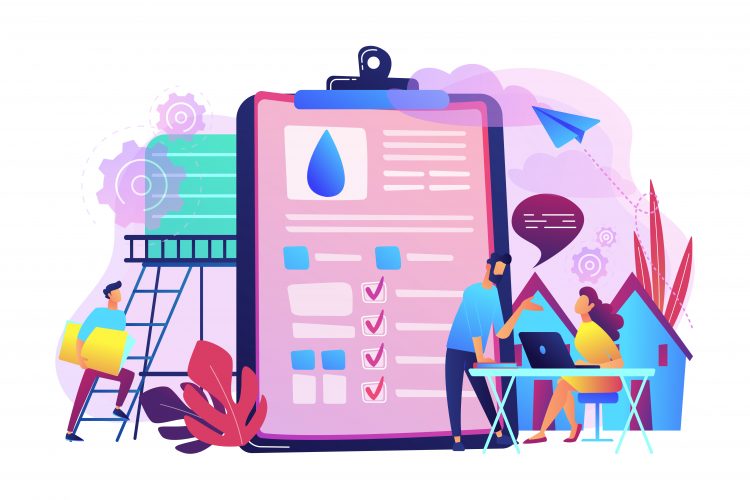Double materiality is a critical concept for organizations aiming to integrate sustainability into their strategic planning and reporting. This comprehensive guide provides detailed steps to conduct a double materiality assessment, ensuring a thorough understanding of both financial impacts and environmental/social impacts.
Steps for conducting a double materiality assessment
1. Understand the Concept
Double materiality involves two distinct but interrelated perspectives:
- Financial Materiality: Evaluates how environmental, social, and governance (ESG) factors influence the company’s financial performance, such as through risks and opportunities that affect profitability, cost structure, and long-term viability.
- Impact Materiality: Assesses how the company’s operations and activities impact the environment and society, considering factors like climate change, resource use, and social welfare.
2. Establish a Clear Objective
Define the purpose and scope of your double materiality assessment. Objectives may include:
- Enhancing sustainability reporting to meet stakeholder demands.
- Identifying and managing risks and opportunities related to ESG factors.
- Aligning corporate strategy with regulatory requirements and industry standards.
- Strengthening stakeholder relationships and building trust.
3. Form a Cross-Functional Team
Assemble a team with diverse expertise, including representatives from:
- Sustainability and ESG departments
- Finance and accounting
- Risk management
- Legal and compliance
- Human resources
- Operations and supply chain
- Corporate communications and investor relations A cross-functional team ensures a comprehensive assessment and integrates diverse perspectives.
4. Identify Stakeholders
Identify key internal and external stakeholders whose input is crucial for a balanced assessment. This may include:
- Employees at all levels
- Customers and clients
- Investors and shareholders
- Suppliers and business partners
- Regulatory bodies and industry associations
- Local communities and non-governmental organizations (NGOs) Engage stakeholders early in the process to understand their concerns and expectations.
5. Conduct Stakeholder Engagement
Engage stakeholders through various methods to gather their perspectives on material issues:
- Surveys and Questionnaires: Collect quantitative data on stakeholder priorities.
- Interviews: Gain in-depth insights from key stakeholders.
- Focus Groups: Facilitate discussions to explore different viewpoints.
- Workshops: Collaborate with stakeholders to identify and prioritize material issues.
6. Identify Relevant Topics
Compile a list of potential material topics by reviewing multiple sources:
- Industry Standards: Refer to frameworks like Global Reporting Initiative (GRI), Sustainability Accounting Standards Board (SASB), Task Force on Climate-related Financial Disclosures (TCFD), and others.
- Peer Reports: Analyze sustainability and financial reports from industry peers and leaders.
- Regulatory Requirements: Understand relevant laws and regulations that impact your industry.
- Internal Documents: Examine risk assessments, strategic plans, and internal policies for insights into potential material issues.
7. Assess Financial Materiality
Evaluate how each identified topic affects the company’s financial performance. Consider factors such as:
- Revenue Implications: Impact on sales, market share, and revenue growth.
- Cost Implications: Effects on operating costs, capital expenditures, and cost savings.
- Legal and Regulatory Risks: Potential fines, sanctions, and compliance costs.
- Market Opportunities: Opportunities for innovation, competitive advantage, and new markets.
8. Assess Impact Materiality
Evaluate the company’s impact on each identified topic. Consider factors such as:
- Environmental Effects: Impact on carbon emissions, resource use, waste management, and biodiversity.
- Social Effects: Impact on community well-being, labor practices, human rights, and customer satisfaction.
- Long-term Sustainability: Effects on the company’s reputation, stakeholder relationships, and long-term viability.
9. Prioritize Material Issues
Prioritize the identified material issues using a materiality matrix or scoring system. Consider the significance of each issue from both financial and impact perspectives. Engage senior management to validate these priorities and ensure alignment with the company’s strategic goals.
10. Integrate Findings into Strategy
Incorporate the prioritized material issues into the company’s strategic planning, risk management, and reporting processes. This may involve:
- Strategic Planning: Aligning business objectives with material ESG issues.
- Risk Management: Identifying and mitigating risks associated with material issues.
- Operational Improvements: Implementing changes to enhance sustainability performance.
- Performance Metrics: Developing key performance indicators (KPIs) to track progress on material issues.
11. Report Transparently
Communicate the results of the double materiality assessment in sustainability and financial reports. Ensure transparency about the assessment process, stakeholder engagement, and prioritization of issues. Clear and honest reporting builds stakeholder trust and demonstrates the company’s commitment to sustainability.
12. Review and Update Regularly
Double materiality is a dynamic concept. Regularly review and update the assessment to reflect changing stakeholder expectations, regulatory environments, and business contexts. Continuous improvement ensures the assessment remains relevant and effective.
Tips for Success
- Engage Early and Often: Continuous stakeholder engagement ensures the assessment remains relevant and comprehensive. Regularly update stakeholders on progress and incorporate their feedback.
- Leverage Technology: Use data analytics and visualization tools to enhance the assessment process, making it easier to identify and prioritize material issues.
- Foster Collaboration: Promote cross-departmental collaboration to integrate sustainability across all business functions. Encourage a culture of sustainability within the organization.
- Benchmark and Learn: Continuously benchmark against industry peers and best practices. Learn from others to improve your own assessment and reporting processes.
- Ensure Leadership Support: Secure commitment from senior leadership to drive the assessment and integrate findings into strategic decision-making.
By following these detailed steps, organizations can effectively conduct a double materiality assessment. This process ensures they address both financial risks and opportunities as well as their broader impact on society and the environment, leading to more sustainable and resilient business practices.








